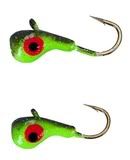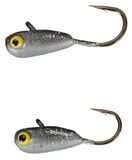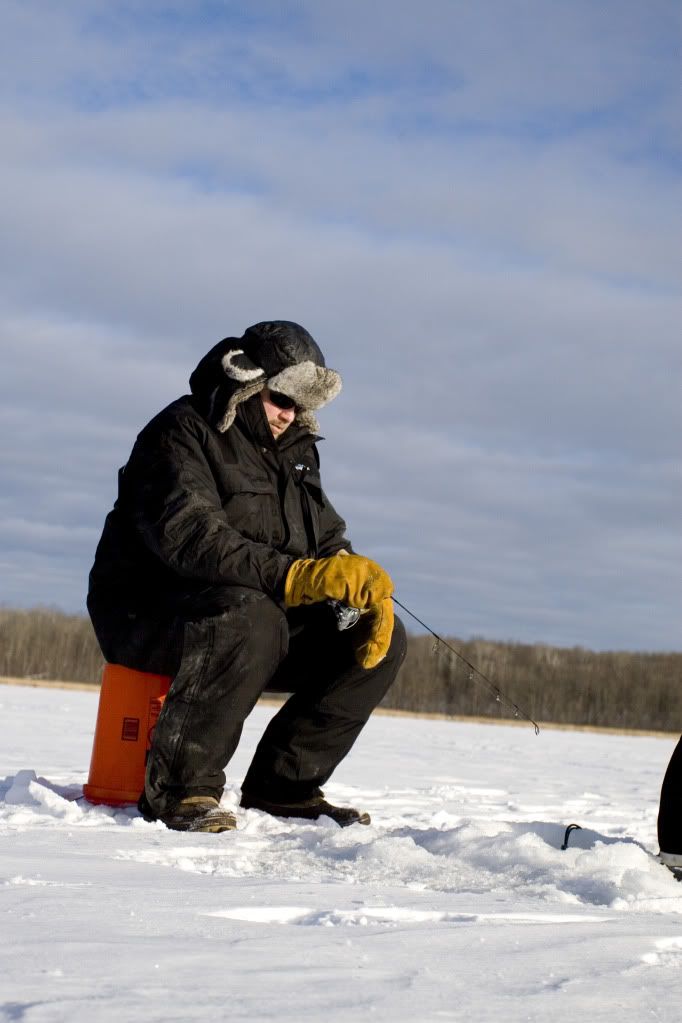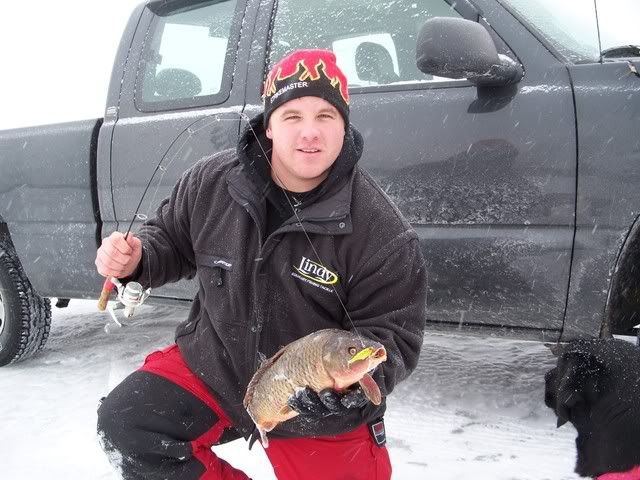Pine to Prairie Panfish
By: Bob Bohland
Big fish live in big fish waters. Most seasoned anglers know this. While a fluke trophy can be caught out of almost any waters; the best way to catch big fish consistently remains to travel to big fish waters. For panfish anglers in Minnesota, you need to simply pick up a road map and follow the Panfish Corridor to find your best chance at trophy panfish. This belt across the state has some of the best growing conditions for panfish, and due to the types of lakes in this region; panfish often survive even the harshest of winters that would otherwise decimate a lake in the southern tier of the state, but can still withstand the fishing pressure they often see.
Why Here?
Some of you are probably thinking that the northern lakes in the state provide better fisheries for panfish than the middle tier of lakes. But the problem with the lakes in much of the northern parts of the state is their trophic classification. Trophic classification is determined by several variables, but the one most focus on is the total weight of biomass in the given body of water (think bugs as food for the fish). The lakes in the northern tier of the state are generally either oligotrophic or mesotrophic. This means that they have fewer nutrients to support fast growing populations of fish and in the instance of panfish, their populations of large fish can be quickly depleted by over harvest and may take long periods of time to recover. So while these northern lakes can often have amazing fisheries, any amount of pressure can quickly dampen the chance at quality fish.
The southern tier lakes in the state have the exact opposite problem. Many of these lakes are often in the eutrophic or hypereutrophic range. There is tons of food available for panfish to get big and get big quick. So while it may take only 4-6 years to grow a trophy bluegill or crappie in these lakes, they often will not live longer than that due to lack of oxygen in the lakes during harsh winters. Lakes in this area freeze out very regularly, so while an angler may find an amazing fishery for one or two years, it can just as easily die off during a long winter.
Lakes along the Pine to Prairie Corridor are right in the middle of the two extremes. Classified along the line of mesotrophic and eutrophic, they mostly have abundant food sources, and are big and deep enough to provide ample oxygen during a long winter to ensure the survival of a fishery. So these fish can grow fast and have the ability to live for a long time without the occurrence of winter kill. The majority of these lakes fall within a corridor of where the big north woods meets the prairies of southern Minnesota, essentially following Interstate 94. The best areas to target can be found by looking at the Minnesota DNR's ecological provinces map, as they all fall in the Eastern Broadleaf Forest section.
Narrow It Down
Now this doesn’t mean that all lakes in this region will pump out trophy bluegills and crappies by the bucket load. It may take some homework to narrow down the best waters in the area. While many smaller lakes in this region can kick out some very nice panfish, small lakes are susceptible to over harvest just as much as the big northern lakes. Your major focus should be on lakes that are at least 250 acres in size and are known to produce quality fish, as it won’t do any good to go fish a lake that doesn’t even have a panfish population. Bigger lakes also have the added benefit of offering areas that hold fish that have often been overlooked by the masses. Although that isn’t to say that you won’t find a tiny little hidden gem from time to time, but they are more the exception than the rule, as this strip of lakes also has a large amount of human population in the area.
A good lake map is your best friend when it comes time to find these plethoras of panfish and if the map shows bottom composition, it’s even better. These fish get big fast because of the amount of aquatic invertebrates in the water. They will consume these insects in mass amounts while packing on the pounds. Many anglers don’t understand how to incorporate lake maps with the type of insects the fish are keying on. For instance, if the fish in the lake you are fishing generally eat daphnia or freshwater shrimp, shallow to mid-depth flats with green weeds are the best spots to key on. Pelican Lake in Albertville, Mn is a good example of this type of lake. It is a shallow bowl that seems to pump out ridiculous numbers of big panfish every year due in large part to the overwhelming numbers of freshwater shrimp and other invertebrates in the lake. By keying in on green weeds on this lake you can find the bigger fish as they chase these insects and other prey around.
In deeper lakes with thick mud bottoms often times the fish will tend to key on insects that spend more time in deeper water such as mayfly larvae and bloodworms. Areas to concentrate on in these lakes include mud to sand/rock transition areas and any area that you can find with the stickiest bottom possible. On your Marcum, these areas will show up as a very thin band that indicates limited sonar read back. You can test the stickiness of the bottom further by putting a depth bomb on your hook and sending it down. The harder it is to pull the weight out of the bottom, the better the fishing will often be. One great example of this is Lake Osakis in Douglas County, the panfish tend to sit on sticky bottom areas gorging themselves on invertebrates, often even going down into the substrate to fan the bugs up off the bottom.
The Payoff
Many lakes in this corridor will have both shallow and deep water species of insects, so by meticulously going through a good lake map you can pick and choose how you want to target the fish. For fish in shallow water, anything less than 15-20 feet, baits that can get down into the weeds quickly and stir things up work really well. For fishing shallow lakes for panfish such as Pelican, I like to go with the Lindy Toad. It fishes heavy, like a bait 3 times it's size, and has the weight needed to punch through any aquatic vegetation. This extra weight is really helpful on lakes that receive a lot of pressure as the fish can often be reluctant to come up out of the weeds to eat when there are plenty of bugs available near the bottom.
Color selection is a variable many anglers simply don’t pay enough attention to, especially in shallow water, it can make all the difference in the world. Even in dark or stained waters, fish can see variations in colors a lot better than anglers give them credit for. In stained waters, such as those found on Pelican Lake, I prefer dark colors. The Viking and Coach Dog colors available on the Toad are great for this application, as they stand out far more than lighter or bright colors in muddy water.
When fishing for panfish in deeper lakes such as Osakis, the best areas to key in on are those with a “sticky bottom”. This so called sticky bottom generally provides the best breeding grounds for aquatic insects, and where there is food, the fish are sure to follow. While many anglers prefer to deadstick with waxworms or minnows in these areas, to really trigger the bigger, more aggressive fish, I prefer to dance a bait around above the fish. This is when I tie on the new Lindy Bug. With bulging eyes and a wide body, the Bug will glide out and around and quiver in place when pounded, and with eyes facing downward the fish can actually see the bait as it imitates the larvae of aquatic insects. By watching your flasher, you can see if the fish want the bait presented on the bottom or higher in the water column. If the fish prefer to eat something closer to the bottom, the new smaller sizes in the Slick Jig are my go to. Loaded with waxworms and pounded into the bottom, the Slick Jig looks exactly like a struggling insect hatching off of the bottom and can be very hard for a fish to resist.
If your goal this winter is to catch some giant panfish, either for the wall, or just to make your buddies jealous, grab yourself a map and follow it to Minnesota's Panfish Belt. These lakes have no problem producing big panfish through the years, and you may discover a few new hotspots that you simply had no clue about.













